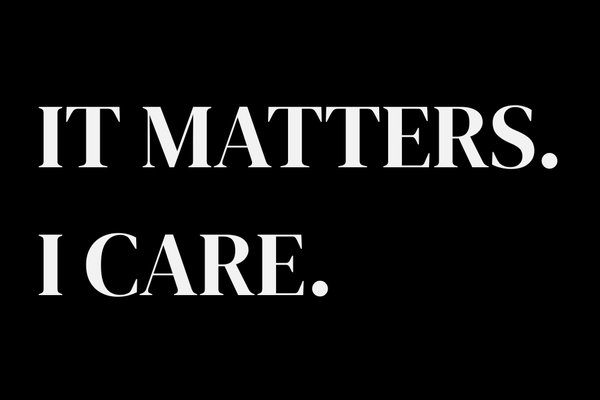Review: Chris Dixon's Read Write Own
Prominent crypto venture capitalist Chris Dixon provides an unconvincing bible for blockchain solutionists.


As with many other web3 evangelists, Andreessen Horowitz general partner Chris Dixon has identified some problems with the web.
In recent years, the web has become increasingly monopolized by the small group of powerful companies that have come to be known as "Big Tech". He will hear no argument from me on that point, although the role his own company played in that particular shift is a large and completely unmentioned elephant in the room throughout a book in which he continually condemns these "power brokers" and "capricious gatekeepers" that "squelch competitors" and keep a "stranglehold ... on our lives".
We're all trying to find the guy who did this.
Attempts to create alternatives have all failed, he says, before going on to describe several projects that are very much still in use, such as the RSS and ActivityPub protocols, or federated social media projects like Mastodon. RSS is dead, he repeats endlessly throughout the book.
It's profoundly weird to read RSS's obituary as a person who checks her very-much-still-alive feed reader several times a day to get everything from cryptocurrency news to dinner ideas, and who rarely encounters a website that doesn't provide a functional feed.a And does Dixon somehow not know that much of the thriving podcasting industry is built on RSS, or that many other apps and websites build features on top of RSS without their users ever even knowing it?b
Anyway, fear not, says Dixon, because he has found the solution to the internet's Big Tech sickness: blockchains. "While plenty of people recognize their potential—including me—much of the establishment disregards them," complains a general partner at one of the most powerful venture capital firms in the web space. Now, if we would all just be so kind as to ignore the last fifteen years since blockchains' inception — during which innumerable companies have flailed around trying to find any possible use case beyond the manic speculation that has enriched a few at the expense of many — he's got an idea to sell us.
And I mean "sell" quite literally: the book is peppered with glowing references to companies a16z has backed, but is completely devoid of any disclosures.
Dixon writes that blockchains can provide the foundation for new platforms that will not only supplant the Big Tech monopolies of the current web era, but will be immune to the pull of what he dubs the "attract-extract cycle": a pattern among Big Tech companies where they first attract users with generous offerings and then change the rules so as to extract maximum profits once users are locked in.c
This immunity, he says, will be built-in because blockchains "can, for the first time ever, establish inviolable rules in software". Throughout the book, he refers to "software-enforced", "strong commitments" from blockchains that they won't ever change aspects of the code out from under their users. The problem with this argument is that it overlooks the fact that blockchains can and regularly do change their code — something Dixon himself acknowledges elsewhere when he refers to community consensus to implement software changes. Perhaps he believes that "community consensus" will somehow always reflect the desires of each member of the community, and that that governance mechanism can't or won't ever be captured, but a brief look at some community-governed blockchain projects over the past few years should be enough to disabuse anyone of that misapprehension.
This is only one of many self-contradictions Dixon happily breezes past as he extols the virtue of the technology he's decided will "fix" the web.
After three chapters in which Dixon provides a (rather revisionistd) history of the web to date, explains the mechanics of blockchains, and goes over the types of things one might theoretically be able to do with a blockchain, we are left with "Part Four: Here and Now", then the final "Part Five: What's Next". The name of Part Four suggests that he will perhaps lay out a list of blockchain projects that are currently successfully solving real problems.
This may be why Part Four is precisely four and a half pages long. And rather than name any successful projects, Dixon instead spends his few pages excoriating the "casino" projects that he says have given crypto a bad rap,e prompting regulatory scrutiny that is making "ethical entrepreneurs ... afraid to build products" in the United States.f
In fact, throughout the entire book, Dixon fails to identify a single blockchain project that has successfully provided a non-speculative service at any kind of scale. The closest he ever comes is when he speaks of how "for decades, technologists have dreamed of building a grassroots internet access provider". He describes one project that "got further than anyone else": Helium. He's right, as long as you ignore the fact that Helium was providing LoRaWAN, not Internet,g that by the time he was writing his book Helium hotspots had long since passed the phase where they might generate even enough tokens for their operators to merely break even, and that the network was pulling in somewhere around $1,150 in usage fees a month despite the company being valued at $1.2 billion.1 Oh, and that the company had widely lied to the public about its supposed big-name clients,2 and that its executives have been accused of hoarding the project's token to enrich themselves.3 But hey, a16z sunk millions into Helium4 (a fact Dixon never mentions), so might as well try to drum up some new interest!
In Part Five, Dixon outlines some use cases he thinks are ripe for blockchainification: social networks, video games and the metaverse, NFTs for music and other art, collaborative storytelling, digital money transfer, ensuring creators are compensated when AI models are trained on their work, and preventing misinformation from deepfakes or other forgery. He gives a few weak arguments for why a blockchain might help with each use case, but fails to mention any of the many blockchain-based projects that have already tried to do these things and at best failed to gain traction, if not collapsed spectacularly. At no point does he mention any of the many issues in these spaces that can't be addressed with just a blockchain, or issues which in some cases are made worse by the use of a blockchain.
He also fails to address the criticism that blockchains have yet to produce any viable projects despite hardly being a recent invention. The absence of this discussion is particularly amusing when he explains why he believes blockchains are necessary to fix the internet:
There are only two known network architectures that preserve the democratic and egalitarian spirit of the early internet: protocol networksh and blockchain networks. If new protocol networks could succeed, I would be the first to support them. But after decades of disappointment, I'm skeptical.
Blockchains, conversely, provide only fifteen years of disappointment.
He does briefly gesture at the topic in a portion of the book where he writes that "It can takes [sic] years, decades even, for new computing platforms to go from prototype to mainstream adoption. This is true for hardware-based computers like PCs, mobile phones, and VR headsets, and it's also true for software-based virtual computers like blockchains and AI systems. After years of false starts, someone releases a breakthrough product that kicks off a period of exponential growth." He's correct that new hardware products often take a while to get off the ground — advances in hardware are often required to make these products small enough, cheap enough, or functional enough for mainstream adoption. His only other software example is "AI", a vague and broad term that encompasses many technologies that have been in widespread use for years and years, despite Dixon's claim that it is only just now "going mainstream, eighty years from its inception". He is of course referring only to large language models (a small subset of the technologies broadly termed "AI") which have indeed enjoyed breakthroughs lately thanks to advances in — you guessed it — hardware (GPUs). Blockchains have no such hardware hurdles to overcome, and Dixon does not offer any explanation of what exactly they're waiting for or why it's taking so long.
This is a theme throughout the book: Dixon rarely engages with any criticism of blockchains, though he periodically acknowledges that there is a lot of it. When he does engage with a criticism, he simply says "that's not true" with no supporting argument, for example when he says that people "mistakenly" believe that blockchains are well-suited to illegal conduct, which he simply says is "dead wrong". Ah, well, if you say so.
However, in most cases when he mentions criticism, he doesn't address it, and instead lashes out at the critics themselves, for whom it is clear he harbors a seething hatred. Critics, he sneers, are often just Big Tech workers who fear that blockchains will "undermine their authority". Journalists who write about scammy crypto tokens are engaging in a "disingenuous form of criticism" that "focus[es] on the bad while dismissing the good". Critics haven't even bothered to put in the work of understanding the technology, he says, and he accuses them of not bothering to look at the design of such blockchains as... Ethereum.i
To his credit, Dixon occasionally makes some compelling, although hardly new,j points about ways in which the internet has trended towards a commercialized, capitalist hellscape controlled by relatively few massive companies.
And at some points he makes credible arguments for things that I agree could help to push back on this model, including more investment in open source software or in protocols that can form the foundations for new platforms.k He even at times seems to get close to hinting that maybe — just maybe — we ought to re-evaluate how web projects are funded, since the current models often incentivize companies to, as he puts it, "consolidate wealth and power in the hands of a small group: investors, founders, some employees. To a lucky few go the spoils." He then unceremoniously veers away from the topic lest he enter dangerous territory for a venture capitalist.
But these small glimmers are few and far between, perhaps amounting to a blog post worth reading but certainly not a 300+ page book. Any alternatives besides blockchains are given little consideration before he declares them nonviable for reasons far more surmountable than the hurdles he fails to mention are facing blockchain networks.
I was left wondering: who is this book for? It's certainly not written to convince the skeptics, for whom Dixon's disdain is made quite clear. And the dearth of citations or even the briefest of arguments to support the many bold claims Dixon presents as though they are fact suggest it's not for any but the most uncritical of fence-sitters, who are willing to accept Dixon's statements at face value. It seems to me that Dixon's target audience must just be the believers: the people who are already convinced, and want little more than a book to nod along to.
Postscript: Errors and citations (or lack thereof)
Although there are no footnotes marked in the text,l I was briefly pleased to find a section for notes at the end of the book, where Dixon does lightly cite various sources — mostly news articles, and many from crypto media outlets. However, my relief that I might be able to easily fact-check the long list of questionable claims I had noted quickly faded as I discovered that citations were included to verify things like his statement that "people hated the irritating alien Jar Jar Binks", and not the much bolder claims he makes throughout. Many claims go completely unsubstantiated, and one subsection — the one on "Blockchain networks" — cites just one source (for the epigraph).
I recognize that my affection for explicit references is perhaps somewhat stronger than the average person's, and that a lot of non-academic literature doesn't follow the more academic citation style, but it is odd to provide citations for fairly inconsequential details without providing support for the more important claims.
Even without doing a thorough review of the citations he does provide, I found two instances where the provided citations don't actually support the claims he makes.
In the first, Dixon writes that people have begun to gate access to content they publish on the web to thwart AI companies from training their models without permission. "Maybe AI systems could fill in the gaps by funding their own content," he writes. "This is already happening today with 'content farms'—buildings full of workers who are instructed to create specific content to supplement AI training data."
Now, I'm familiar with content farms churning out poor-quality writing (often with the help of AI) to try to game search engines and lure in advertising revenue, but I hadn't heard of AI companies using such services to specifically create material for their training datasets. If they are, neither of his two sources discuss the practice. The first source, a 2023 New York Times article, describes the content gating he mentions, and makes an oblique reference to a statement from OpenAI that they train their models on content including "content created by human A.I. trainers" — with no mention of content farms.m The second source, a 2023 MIT Technology Review article, speaks of AI-generated content farms spitting out website content to attract ad revenue, but does not describe content farm material being used to train AI models.
The second error I observed was when Dixon claims that "physical merchandise" like shirts sold by musicians is dwarfed by the sale of "virtual goods" like premium outfits or dance animations for video game characters: "The music industry sold $3.5 billion in merchandise in 2018, whereas the video game industry sold $36 billion in virtual goods that same year—a figure that has nearly doubled for video games since." For the $36 billion figure, he cites a 2019 press release from the Entertainment Software Association, which in turn cites data from The NPD Group and Sensor Tower. That data shows that the $36 billion figure actually refers to all video game revenue outside of hardware and peripherals, and includes things like the games themselves and subscriptions to games — not just the sale of "virtual goods". On the other hand, the $3.5 billion figure does refer only to merchandise — recorded music brought in another $19.1 billion,5 and touring and other revenue streams would bring the number higher still.
Footnotes
As it happens, Dixon's very own website has a functioning RSS feed. He may not even realize this, as RSS is so ubiquitous that many website and blog software products either build it in by default, or make it easy to add with simple plugins. ↩
It was in one of those very same RSS-delivered podcasts where I recently heard Eric Silver talking about powerful tech companies bashing RSS because it doesn't fit the extractive, moneymaking model they desire: "They’re so mad that the RSS feed doesn’t harvest data! They hate it!" This, I suspect, is the real reason Dixon describes RSS throughout the book as "dead", "failed", "fizzled", "doomed", and "fallen". ↩
Personally, I prefer Cory Doctorow's term: "enshittification". ↩
Dixon speaks of how in the early days of "web1", or the "read era" (a period he defines as 1990–2005), "anyone could type a few words into a web browser and read about almost any topic through websites". This completely ignores that few people — hardly just "anyone" — had access to a computer, much less a computer with internet access, in that time. By 2005, around 16% of people globally were online.6 ↩
The "casino" thing is a16z's version of No True Scotsman that I've mentioned before. All the good projects that they like are "crypto computers"; all the failed, embarrassing crypto projects get the "casino" label and aren't "real" crypto projects. ↩
For this, he cites two crypto firms (Coinbase and Paxos), who have both been using the "if you don't write us friendly, bespoke regulations, we will be forced to take our business elsewhere!" threat as a lobbying tactic. ↩
LoRaWAN is a low-power networking protocol used mostly by sensor devices. In August 2022 Helium started advertising that it would be offering "5G", a claim that Dixon repeats without caveat in the book despite the fact that Helium's "5G"... isn't actually 5G and has been very minimally deployed. ↩
In Dixon's parlance, "protocol networks" are things like email, the web, RSS, or XMPP: open and largely free-to-use systems providing protocols on which developers can build clients and other software. ↩
Ethereum is, at worst, the second most popular blockchain (depending on how you measure). Every single blockchain critic I can think of is perfectly familiar with how it works. ↩
This is a topic I described in a November 2022 talk, for example, where I also mention a16z's fondness for criticizing the "web2" internet without acknowledging their role in creating it. ↩
For a more coherent discussion of this that doesn't throw out the whole idea in favor of trying to convince you blockchains are worthwhile, try Mike Masnick's authoritative "Protocols not Platforms". ↩
At least not in my digital copy; perhaps the print edition includes them. (Update: I have been informed it does not.) ↩
AI trainers typically perform a variety of tasks including formatting datasets, annotating data, rating responses, testing conversational flows, and so on. ↩
References
"Embattled Helium is attempting a second act as a crypto-powered mobile network", Fortune. ↩
"Web3 darling Helium has bragged about Lime being a client for years. Lime says it isn't true." Mashable. ↩
"Crypto Darling Helium Promised A ‘People’s Network.’ Instead, Its Executives Got Rich." Forbes (archive). ↩
"Andreessen-Backed 5G Blockchain Network Raises $111 Million". Bloomberg. ↩
"IFPI Global Music Report 2019", International Federation of the Phonographic Industry. ↩
"Facts and Figures 2023 – Internet Use". International Telecommunication Union, United Nations. ↩




